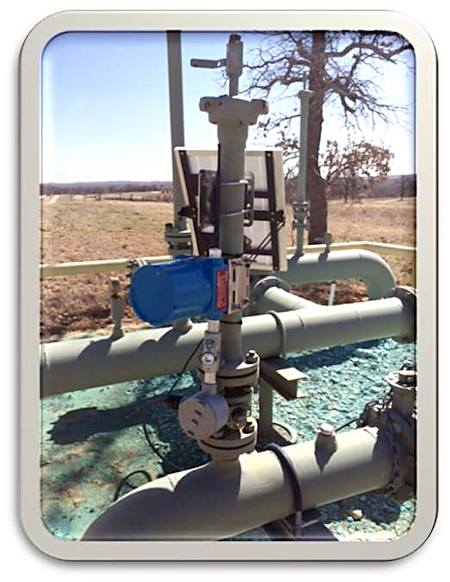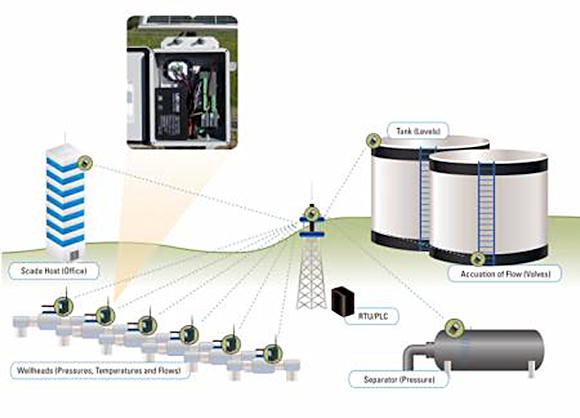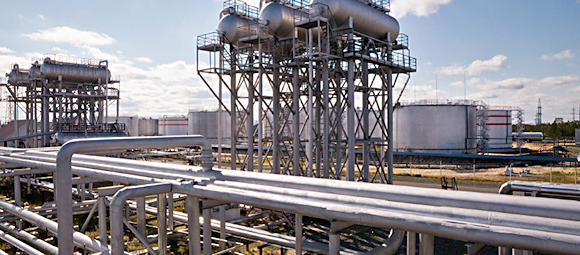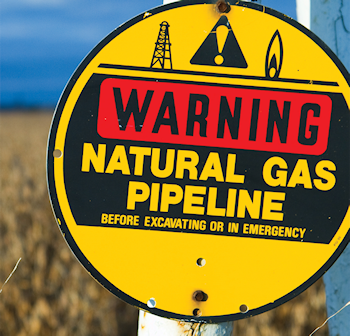
Introduction
Production demands of the 21st-Century are increasing at an extraordinary pace. Several industrial markets face challenges going forward, including reliable real-time monitoring of assets, dealing with 24-hour production demands, and managing high costs in terms of both time and resources to manage assets in remote locations. These market forces have naturally led to the emergence of the industrial internet of things (IoT) and the adoption of wireless technology for machine-to-machine (M2M) communications.
Combining new networking technologies with sensor technologies has enabled new opportunities in process automation, remote monitoring, and control. For example, wireless input/output (I/O) technology is increasingly in demand, especially for industries like oil and gas, energy and utilities. As industrial markets focus more on safety, automation, and/or improving operational efficiencies, the demand for more intensive monitoring, measurement and process control has naturally followed.
The consequences of incidents, such as natural gas pipeline explosions, have contributed to the demand for more safety and monitoring regulations along pipelines. California for example, saw tightened state regulations as a result of the San Bruno disaster, which included more stringent requirements for pipeline monitoring. Across industries such as oil and gas, water/wastewater and other utilities, there are certainly areas with the presence of hazardous gasses and therefore potentially dangerous environments.

While preventing catastrophic events or costly damages lies largely in diligent and continuous monitoring, there also needs to be an assurance that the M2M communication devices enabling the monitoring from sensors and devices will help minimize risk among the presence of flammable/explosive gases. Wireless I/O technology that has achieved a Class 1, Division 1 (C1D1) UL Listing is designed to perform safely in such hazardous environments. With the appropriate technology, an organization not only can monitor more points at a wellhead, along a pipeline or at a facility, but also can achieve the extra level of safety with C1D1 communication devices.
How Does a C1D1 Certification Address Hazardous Environments?
The C1D1 UL listing ensures that technology can operate in hazardous environments and will not cause an increased risk of fire or damage. According to a document on UL's website, there are several possible options for obtaining a C1D1 certification. These include:
- Intrinsically safe apparatus, circuits, and systems: each element must be secure in hazardous environments and deemed incapable of being ignited by any spark or thermal effect.
- Explosion-proof apparatus: the apparatus is enclosed in a case that will uphold in the explosion of a specified gas or vapor that may occur and, likewise, will prevent the ignition of a specified gas or vapor surrounding the enclosure by sparks, flashes, or explosion of the gas or vapor within. It must operate at a temperature that will not cause the surrounding flammable atmosphere to ignite.
- Purged and Pressurized: the process of (1) purging - supplying an enclosure with a protective gas at a sufficient flow and positive pressure to reduce the concentration of any flammable gas or vapor initially present to an acceptable level; and (2) pressurization, supplying an enclosure with a protective gas with or without continuous flow at sufficient pressure to prevent the entrance of a flammable gas or vapor, a combustible dust, or an ignitable fiber.
Wireless I/O Options
There are a variety of wireless C1D1 monitoring technologies available for oil and gas, and utility operators. These solutions range from intricate integrated systems to individual sensors for monitoring specific points along a pipeline or at the wellhead. For example, there are C1D1 solutions that come with one or two I/O points per device.
With this type of technology, operators will need to install an I/O device for each monitoring point. If there is a situation where many points are being monitored, costs for these solutions can quickly accumulate. There also are C1D1 providers who offer a larger I/O count with multiple I/O points, which tend to be more complementary for a network that requires several measurement, monitoring or control points and can provide a superior value.
Recently, C1D1 solutions were released with the ability to connect a large number of I/O points. These solutions were developed to easily and cost-effectively scale the I/O deployments as needed along the pipeline.

Designed to excel at leveraging an existing install base, this type of wireless I/O technology offers a more seamless field deployment. These devices are also backwards compatible and will communicate with legacy systems to protect any initial investments in the wireless M2M communications infrastructure. Additional benefits that new wireless I/O technology can offer include:
- Up to six analog inputs, two digital inputs with pulse counters and two digital outputs
- Flexible aggregation: operators can pull in data from many different places, many types in real-time, because of the higher I/O account and capabilities of the master radio / concentrator.
- Solar panel and battery: the battery allows for operation at night or for several days during heavy snow. The battery is rechargeable through the solar panel. The combination of a rechargeable battery and solar power offers the ability for faster polling without frequent trip to replace the battery. With these components, operators can avoid scheduled maintenance requiring them to drive to the field, go into the hazardous area, open the device, change the battery and close it back on a regular basis.
The latest C1D1 wireless I/O technology is ideal for deployment in larger networks in order to overcome the limits of short range technology and limited I/O points.
Application Examples
Oil and Gas
-
Wellhead monitoring and control
With the right technology provider, wireless I/O can connect to the remote terminal unit (RTU) and effectively bring data back to the controller to monitor for oil or gas well decline or flow issues. A unit with a high I/O count and a C1D1 certification allows for placement directly on a wellhead where hazardous gases are present without having to separate mounting, inside the containment areas or on top of tanks.

-
Tank levels and separators
With C1D1 wireless I/O technology, operators can safely determine tank levels from the RTU or their office and they won't need to send anyone out until the tank is getting full or if there is a problem. Safety is improved with automated safety shut in based on full tanks. Additional measurements now often include monitoring temperatures on three phase separators. The tank separators work to divide the gas, oil and water that comes from the well and by monitoring the temperature on site, operators can make sure they are working efficiently.
-
Vapor recovery units
Driven by laws meant to reduce emissions, vapor recovery units can be monitored and/or controlled by C1D1 wireless I/O. The data helps operators make intelligent decisions while keeping safety a priority. The units will kick on at a certain pressure, like an air compressor, except rather than compressing air, it is compressing the natural gas coming off the tank. Essentially, it brings that gas off the tank, compresses it, and then pushes it into the sales line. It's not only better for the environment, but the oil and gas company can sell it.
-
Flare stack monitoring
Flare stack monitoring serves a similar purpose as vapor recovery units. The pilot light inside a flare is running and operators need data to show that if gas is vented, it no longer just goes to the atmosphere; it goes to the flares which will burn up the gas to less harmful components. This is another environment in which a C1D1 communication device can help ensure that automated monitoring can safely occur, and operators can monitor that the flare stack is indeed doing its job.
-
Pipeline monitoring
It is essential to monitor the pipeline in order to determine if there are leaks. The length and age of our pipeline infrastructure places an increased importance on monitoring and control points along the pipeline infrastructure. Operators need know where their product is so they can effectively control the valves and different control elements along that pipeline. Some of this monitoring and control is driven by regulation. Additionally, in today's industry, there is more of an emphasis on intelligent operations. Oil and gas companies are no longer focused solely on monitoring points A and B. Modern monitoring technology takes a more intensive look at the pipeline.

Operators are watching things like pressure at many points on the pipeline, and they now have the ability to close or open valves as needed through automation technology. More thorough monitoring and control creates a safer pipeline and minimizes the chance for a catastrophic event.
Electric Power
As electric power continues to trend toward increased automation, wireless I/O will help companies with a wide variety of applications, such as AMI backhaul, distribution management, distribution and substation automation, load management and demand response. Wireless I/O radios can be used for any discrete I/O electric power application that does not require local decisions and control.
Water/Wastewater
Wireless I/O solutions are deployed by both municipal and private water and wastewater entities for reliable, cost-effective remote monitoring of numerous applications. For monitoring storage tank levels, companies can deploy level and pressure transmitters, as well as security cameras. Wireless I/O solutions are also deployed as master meters for propellers, turbines and magnetic flow meters. Other applications include flow and pressure sensors for pumping stations, level and flow monitors for sewer lift stations and process control devices and security cameras at treatment plants.
Conclusion
Monitoring, measurement, and control processes are used for more purposes and across more industrial applications than ever before. Companies not only want to streamline operations, but are focused on safely gathering and transporting their products. The more insight they have on the process, the smarter decisions they can make.
The use of C1D1 wireless technologies allows for easy installation and safe operation in both hazardous and nonhazardous environments. It also decreases the need for wires by allowing installation closer to the infrastructure itself.
As the use of these technologies increases, it is important for operators to understand that the range of technology options is diverse and it is important to find a solution that best fits their M2M networking needs. New C1D1 wireless I/O technologies may be more appropriately suited for remotely located field assets that require a large number of monitoring points.
The fact that solutions are now available for monitoring sensor data and controlling assets in C1D1 environments makes them all the more suited for today's monitoring needs. Above all, it is evident that industrial markets today require simple, yet dependable monitoring and control of M2M devices over distances to maximize the value of production assets.
About the Author
Glenn Longley is the Senior Product Manager for IO and Software at FreeWave Technologies where his responsibilities include owning and driving the full product life cycle management for select product families across several market segments. Previously, he worked at Ferguson Beauregard, Electro Scientific Industries, and has 13 years of experience in this field.
Related Stories
Fluid Level Sensors – More Than Just an On/Off Signal
24%+ CAGR for IoT and M2M Communication Market Forecast to 2019
M2M connectivity solution helps deliver green energy to remote communities without electricity
Operationally Defining The IoT, Part I